Exploring New York’s Industrial Past in "Cathedrals of Industry"
Join photographer Michael L. Horowitz for a journey through 50 years of photographs!


Exploring Paris’s cemeteries–(Montmartre, Montparnasse, Passy, Père Lachaise, and Picpus)–can be a rewarding task. Artists, statesmen, and industrialists abound in these cities of the dead. Additionally, memorials, historical relics, and works of art make such trips all the more fascinating. With enough time, Paris’ cemeteries will reveal their treasures to any visitors. Given that most visitors are on a strict schedule, a cemetery map will save valuable time when conducting a tour of the cemetery’s highlights. However, most maps only point to the general area in which the tomb is located. This leads to aimless wandering and frustration which can be minimized with prior knowledge of a tomb’s design. Therefore, I hope that these articles will serve as a useful tool for visitors to Paris’ cemeteries as well as a guide to those interested in learning more about some of the most famous and interesting sites in Paris.
Père Lachaise was established in 1804 and is located at 16, rue du Repos. It was named after Père Franà§ois de la Chaise, the confessor to Louis XIV, who lived on the site. Unfortunately, the cemetery was not an immediate success. Parisians were wary of being buried in a new cemetery, especially one not consecrated by the church. In order to remedy this situation, the cemetery managed to secure the remains of La Fontaine and Molière and transferred them to the cemetery in 1804. Another public relations move occurred in 1817, when the remains of Pierre Abélard and Héloà¯se were also transferred to the cemetery. They were interred under a canopy made from fragments of the Abbey of Nogent-sur-Seine. Also of note are the Holocaust memorials, the Mur des Fédérés (Communards’ Wall), the lipstick stained tomb of Oscar Wilde, and Jim Morrison’s grave.
Père Lachaise’s famous residents:
Pierre Abélard, the French philosopher, and Héloà¯se d’Argenteuil, the French abbess and scholar, who had an affair:
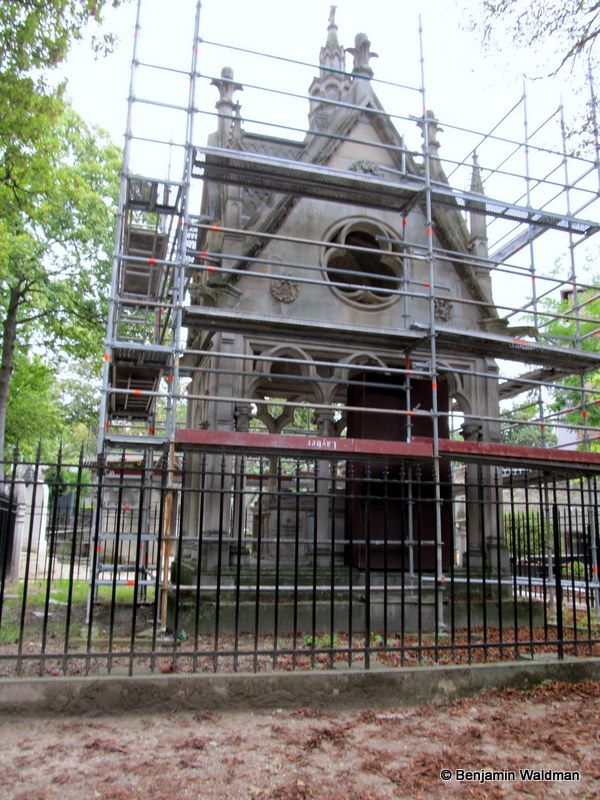
Camille Pissarro, the French Impressionist painter:
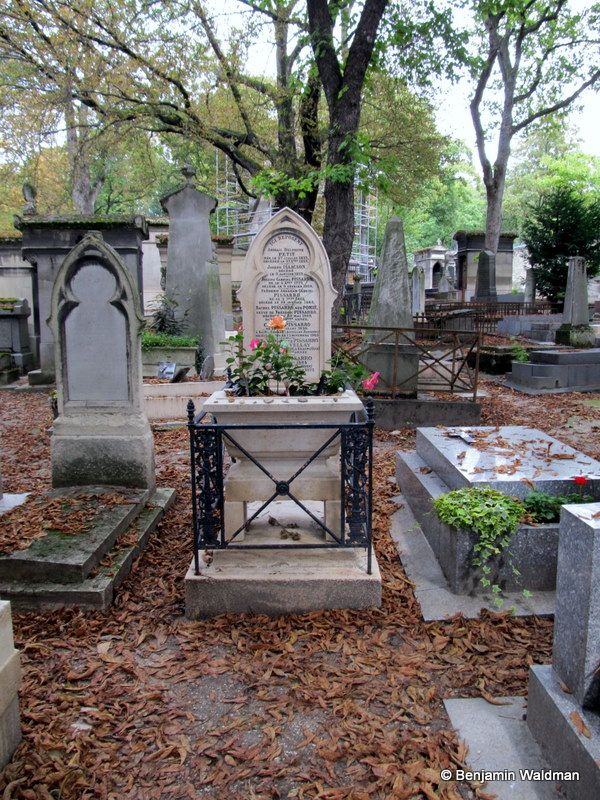
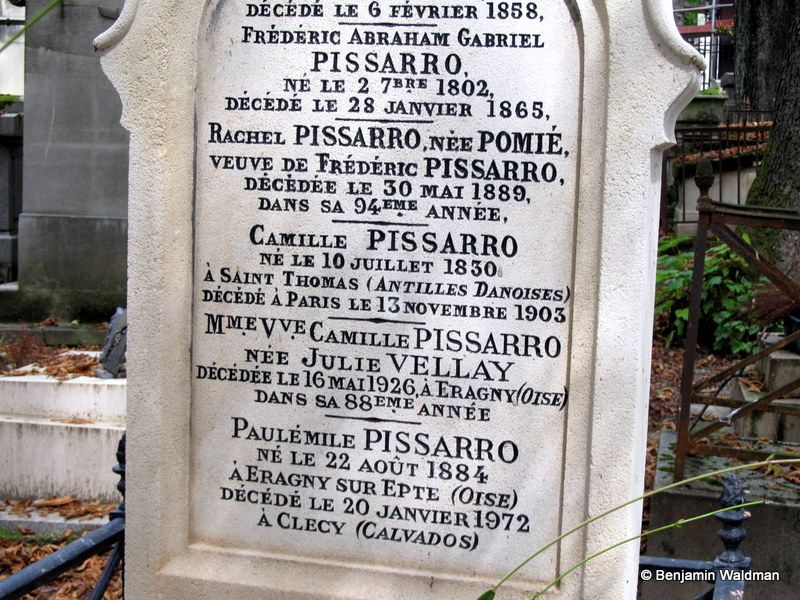
Colette, the French litterateur:
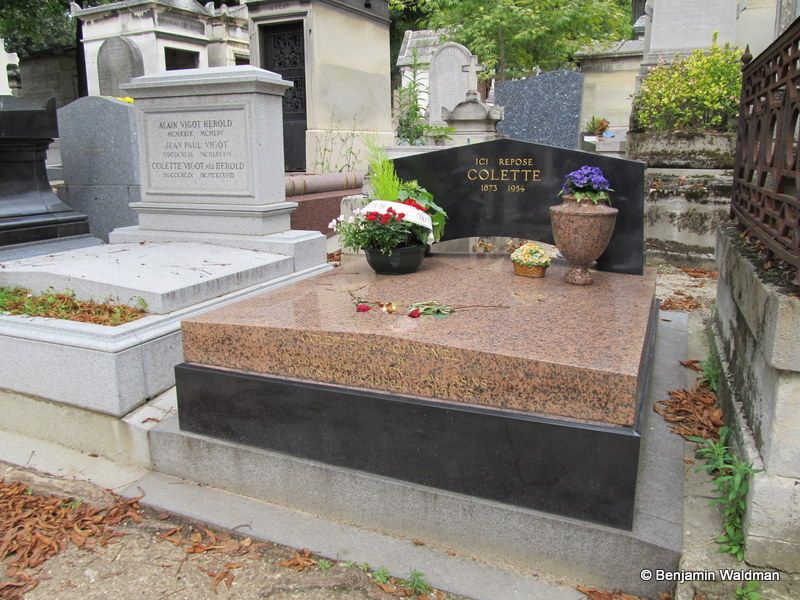
Louis Visconti, the French architect who designed the modern Louvre and Napoleon’s tomb:
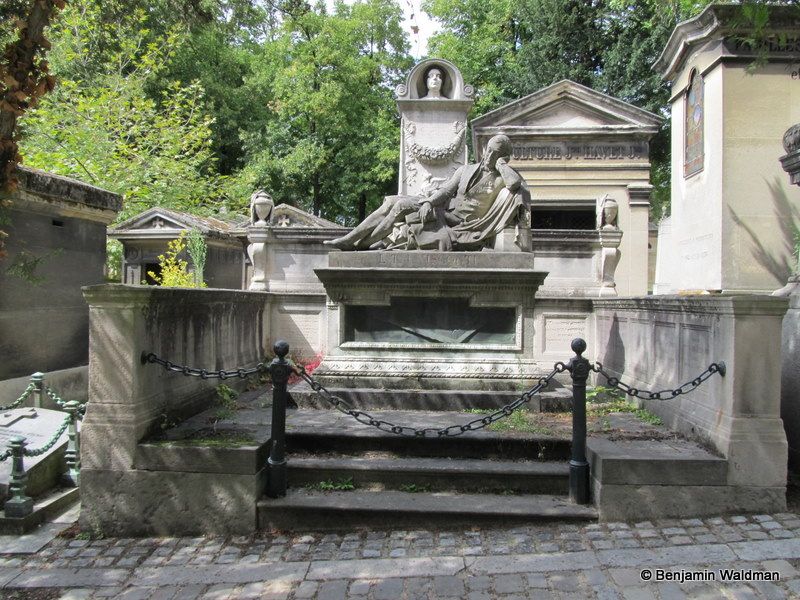
Georges Haussmann, the French civil engineer and town planner responsible for the design of modern Paris:
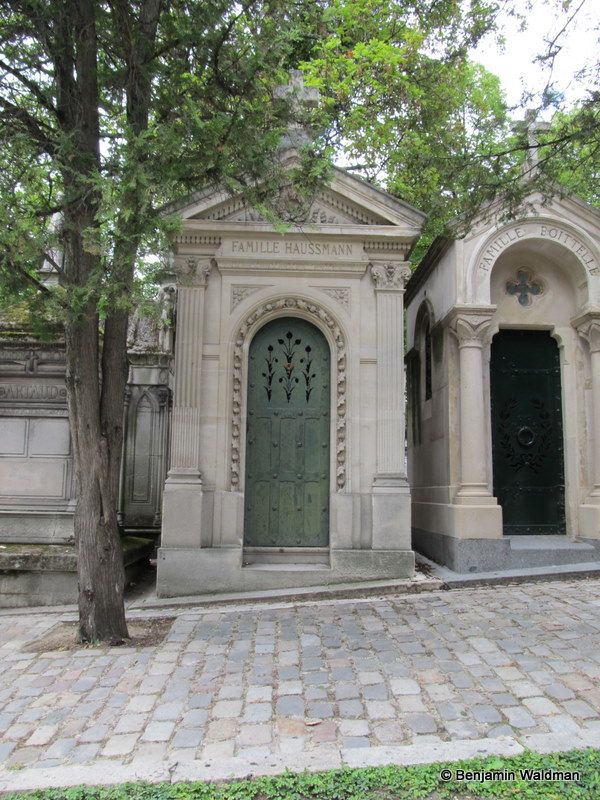
Jacques-Louis David, the court painter for Napoleon. He was exiled as a revolutionary after the restoration. As a result, his body was not allowed to return to France, so the tomb contains only his heart:

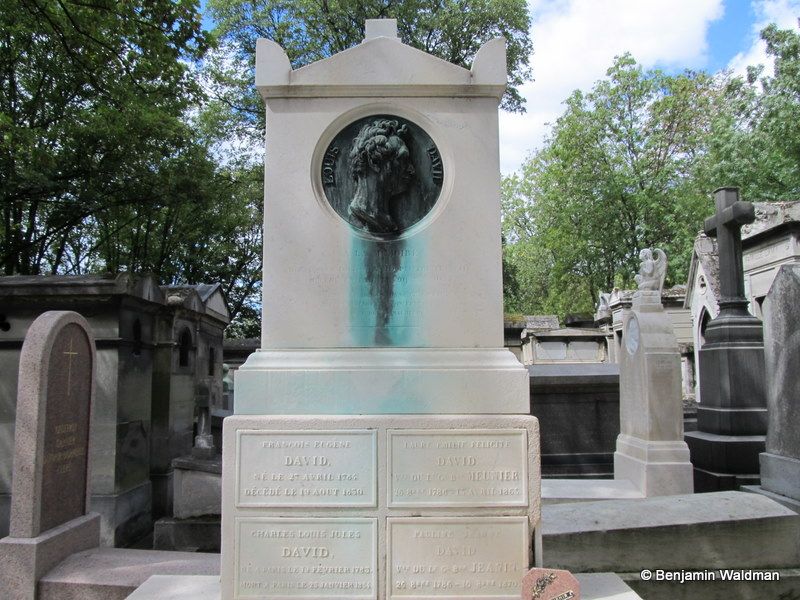
Georges-Pierre Seurat, the French painter and father of neo-impressionism:
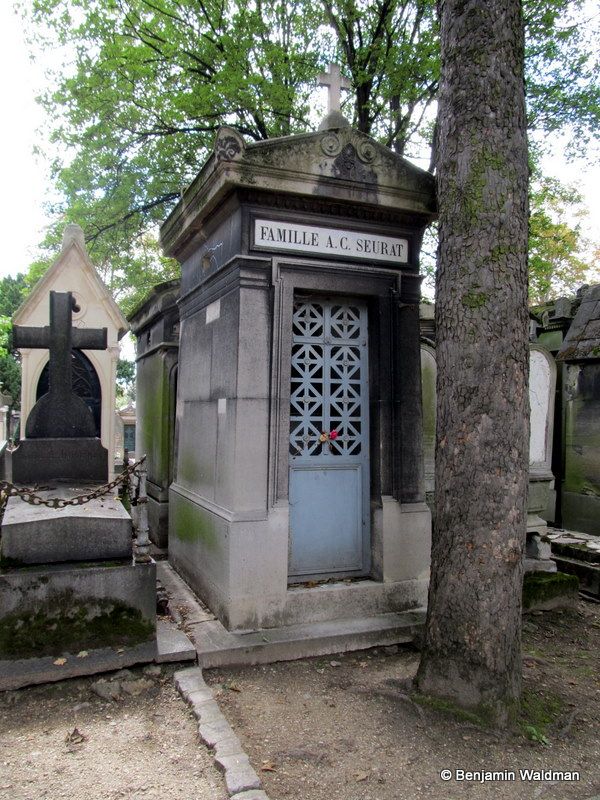
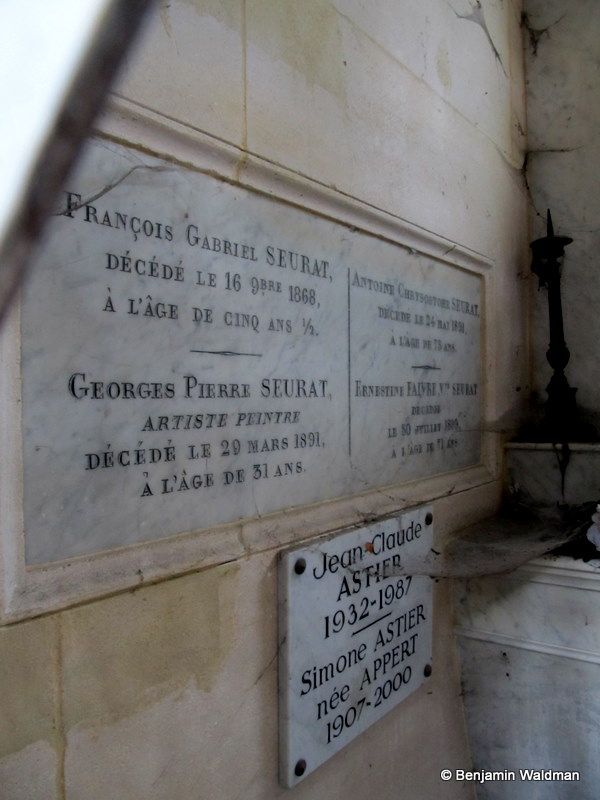
Georges Bizet, the French composer and conductor:
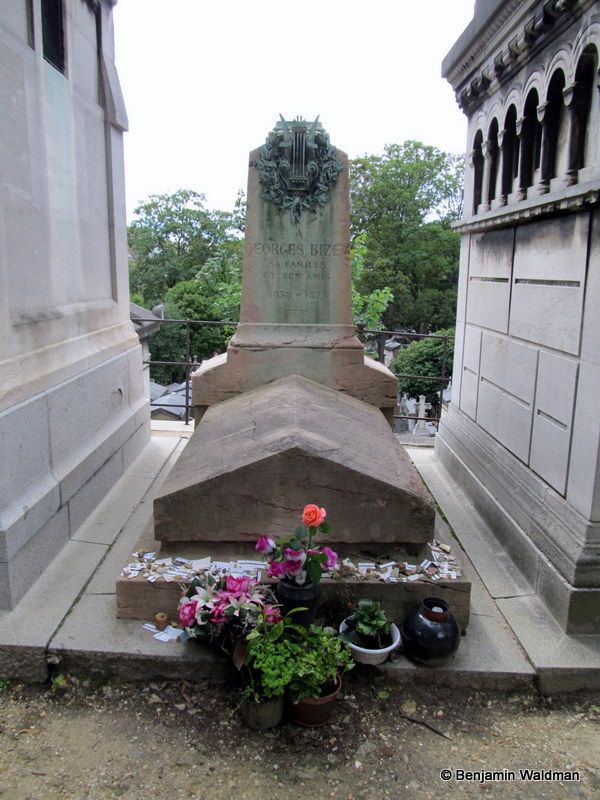
Théodore Géricault, the French Romantic painter. His most famous paintings appear on his tomb:

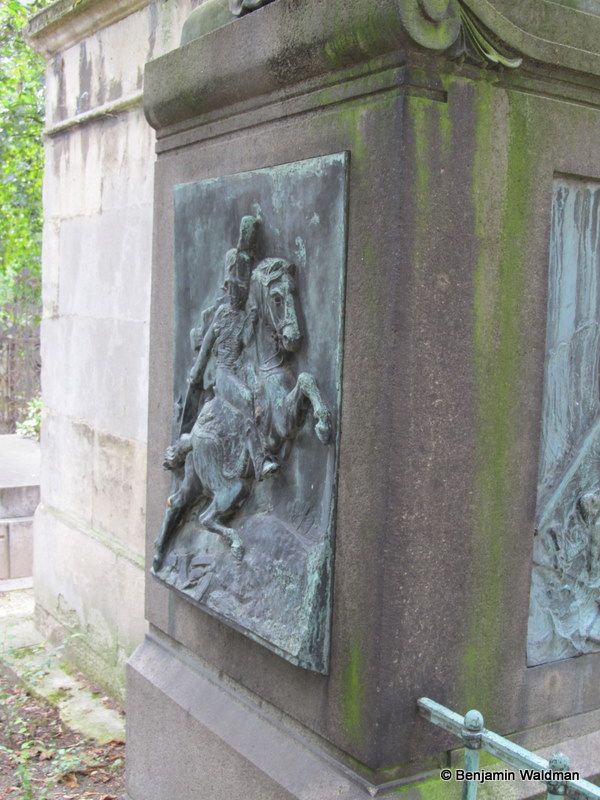
Frédéric Chopin, the Polish composer. Unlike David, his body but not heart is buried here:
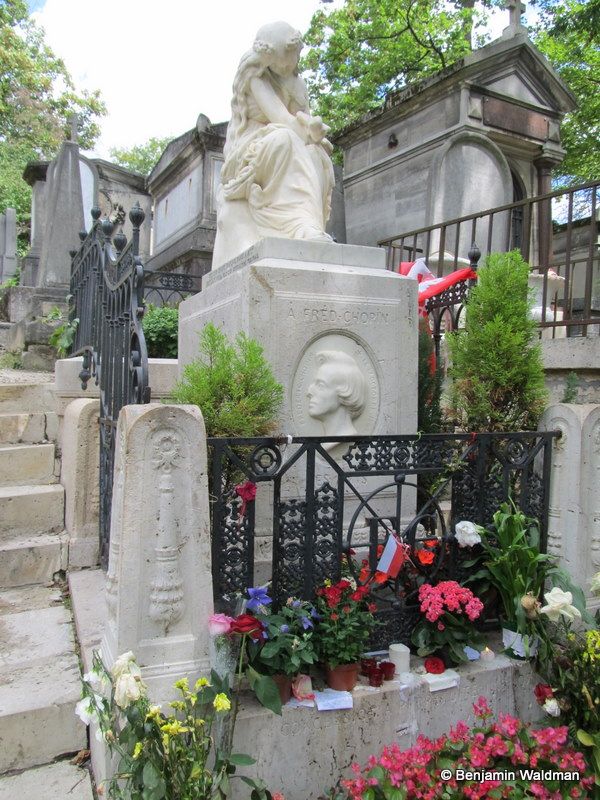
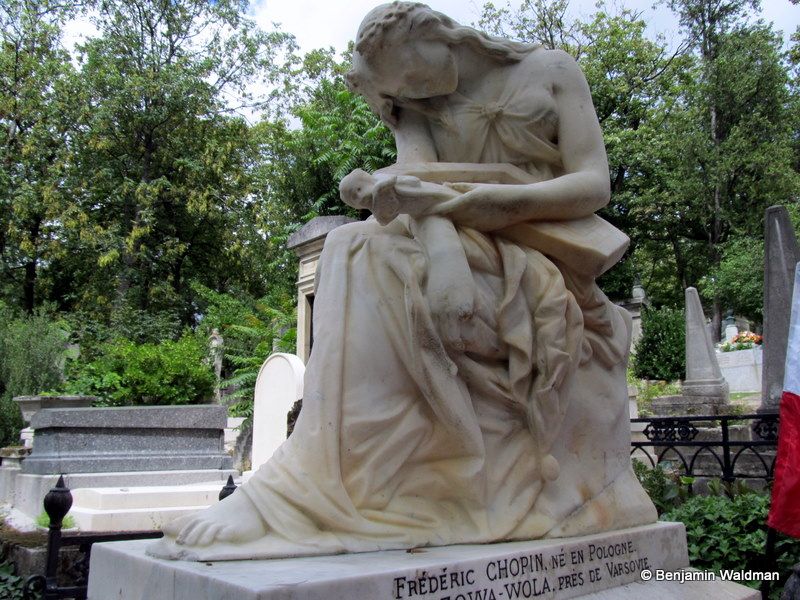
Jim Morrison, the American singer and songwriter with The Doors:

Molière, the French playwright, and Jean de La Fontaine, the French litterateur best known for fairy tales:
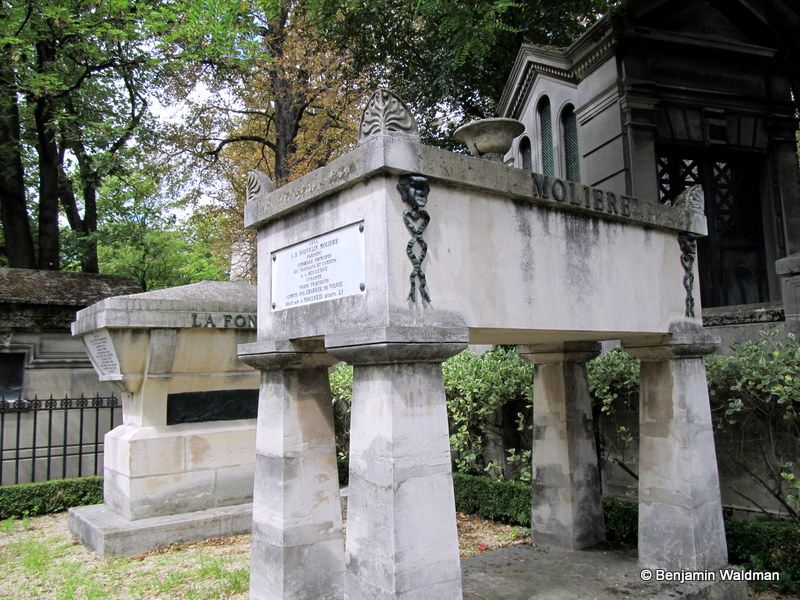

Jean Auguste Dominique Ingres, the French painter:
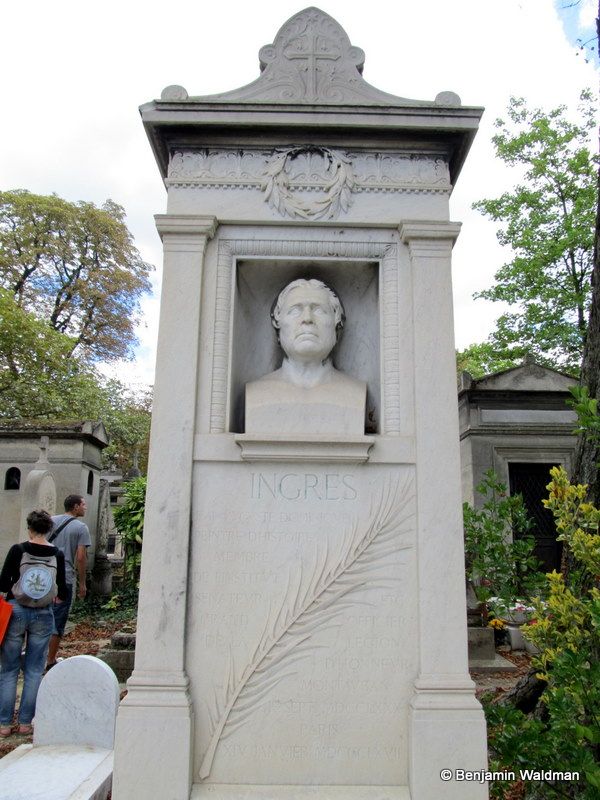

Honoré de Balzac, the French novelist:
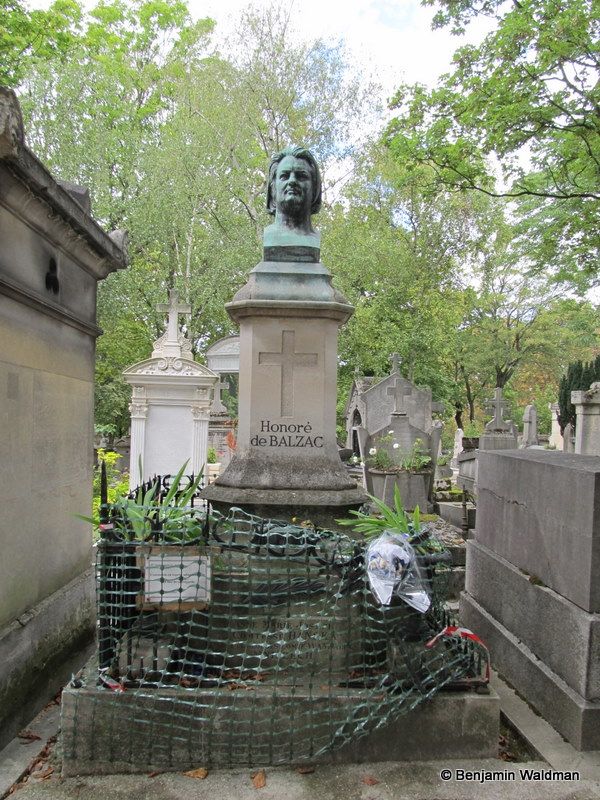
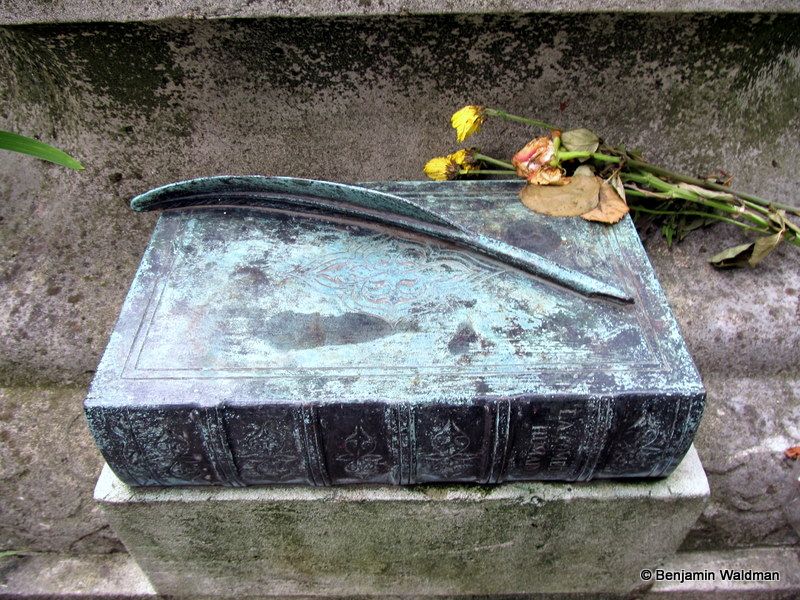
Eugène Delacroix, the French Romantic artist:

Sarah Bernhardt, the French stage and film actress:
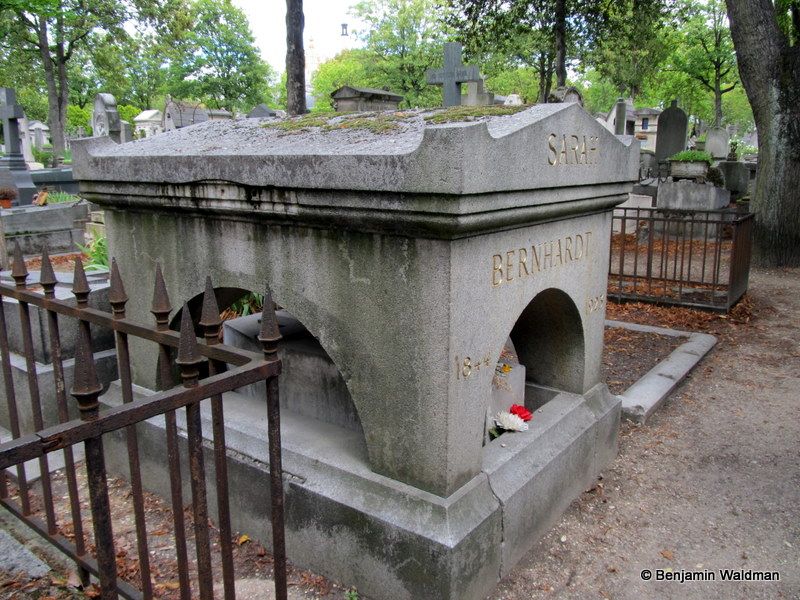
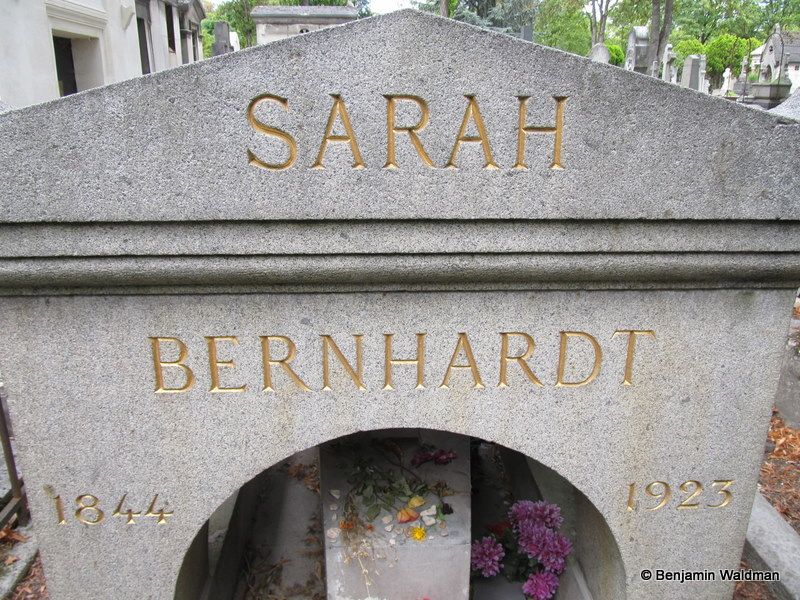
Gertrude Stein, the American author:
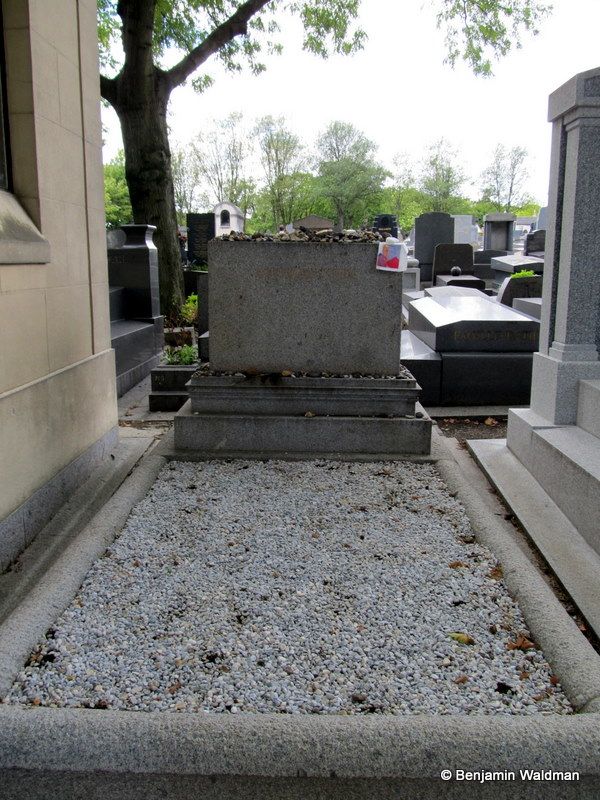
Édith Piaf, the French singer:
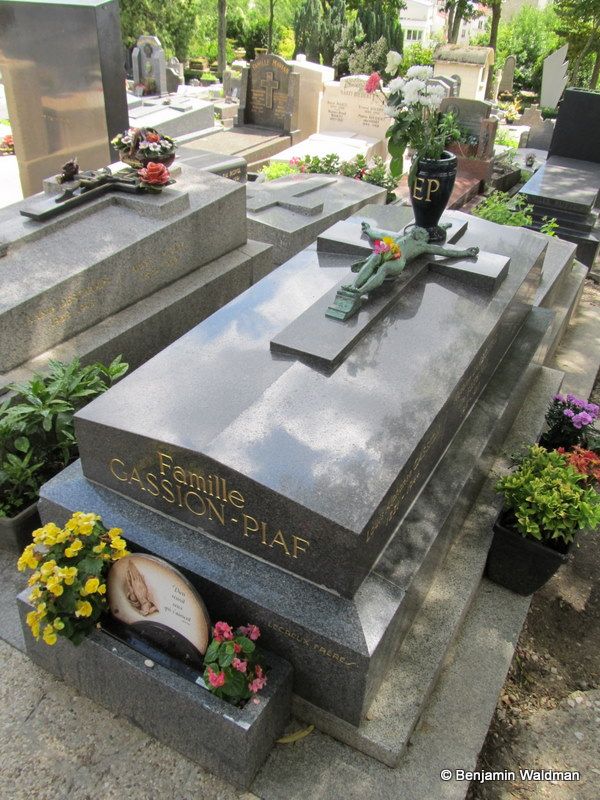
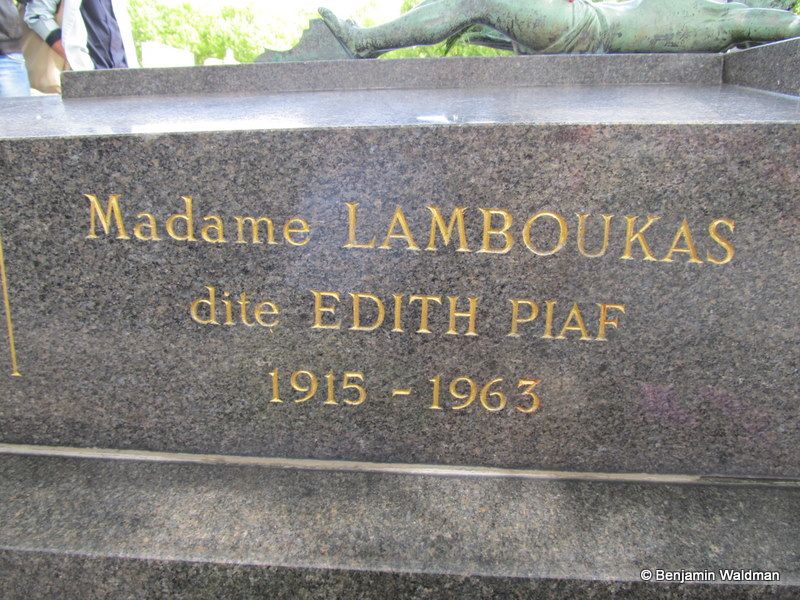
Amedeo Modigliani, the Italian painter and sculptor:


Victor Noir, the journalist killed by Pierre Napoleon Bonaparte in a dispute over a duel with Paschal Grousset:

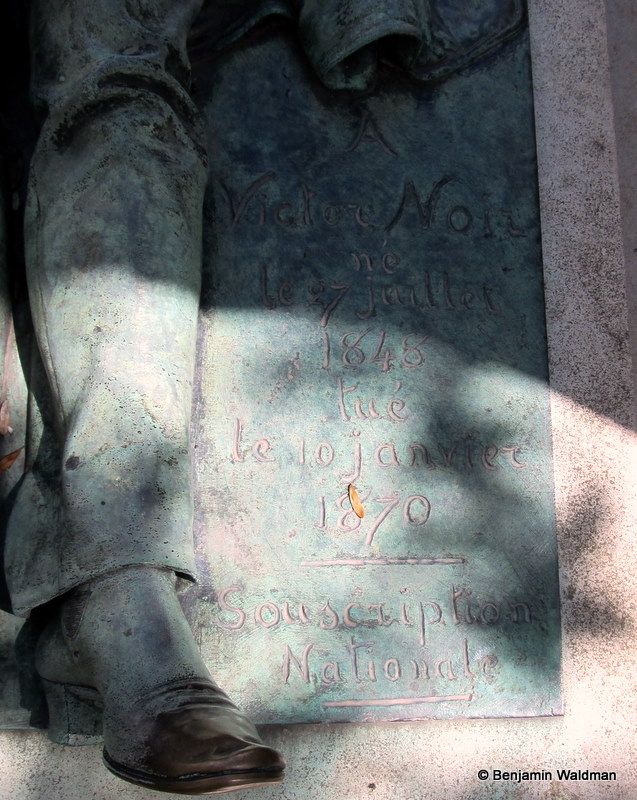
Marcel Proust, the French novelist, essayist and critic:
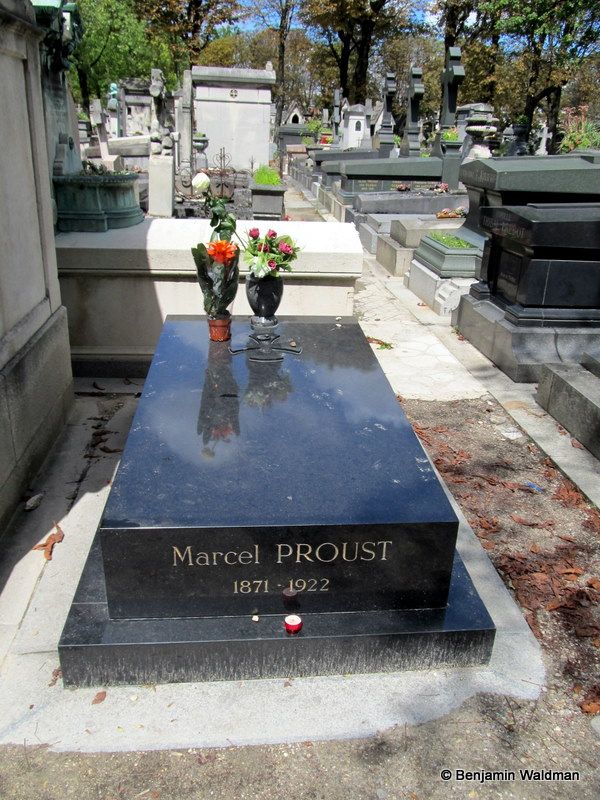
Oscar Wilde, the Irish novelist, poet and playwright:
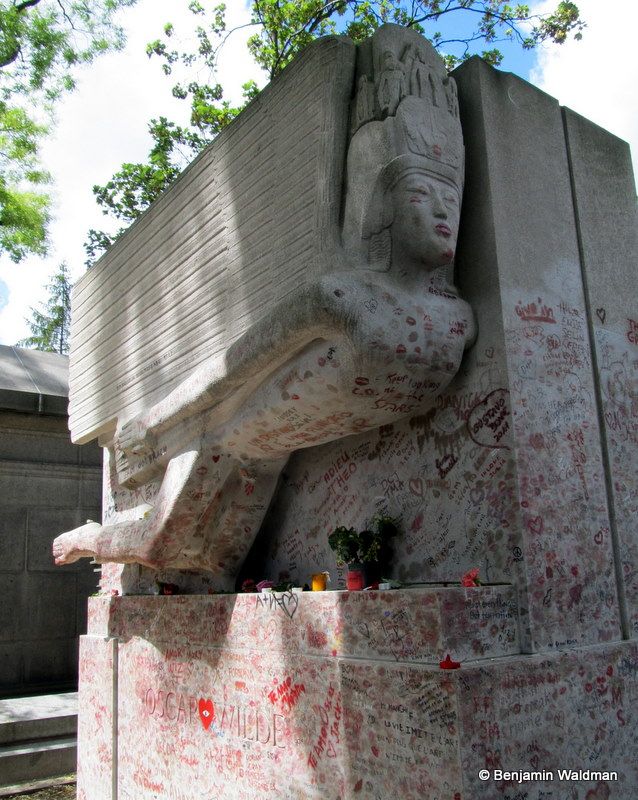
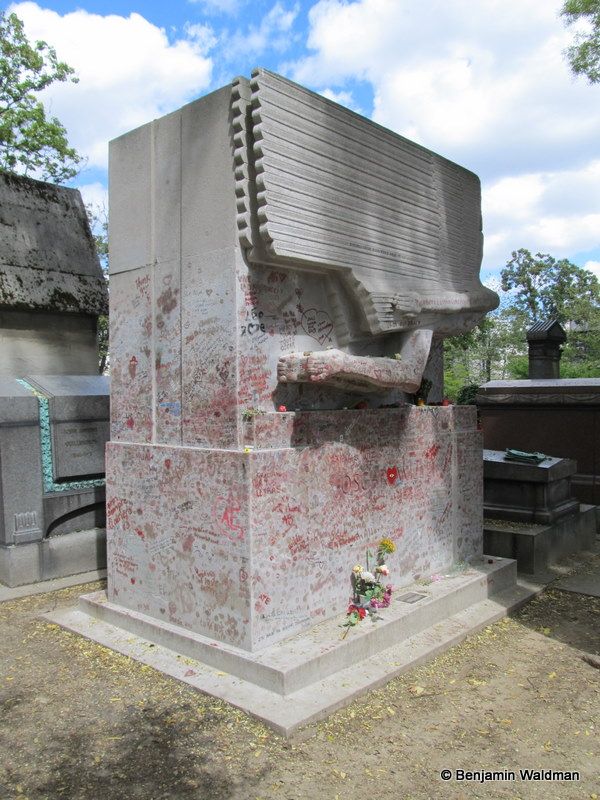
The Cemeteries of Paris:The Treasures of the Père Lachaise Cemetery Part IThe Treasures of the Père Lachaise Cemetery Part IIThe Treasures of the Montmartre CemeteryThe Treasures of the Montparnasse CemeteryThe Treasures of the Passy CemeteryThe Treasures of the Picpus Cemetery
Subscribe to our newsletter